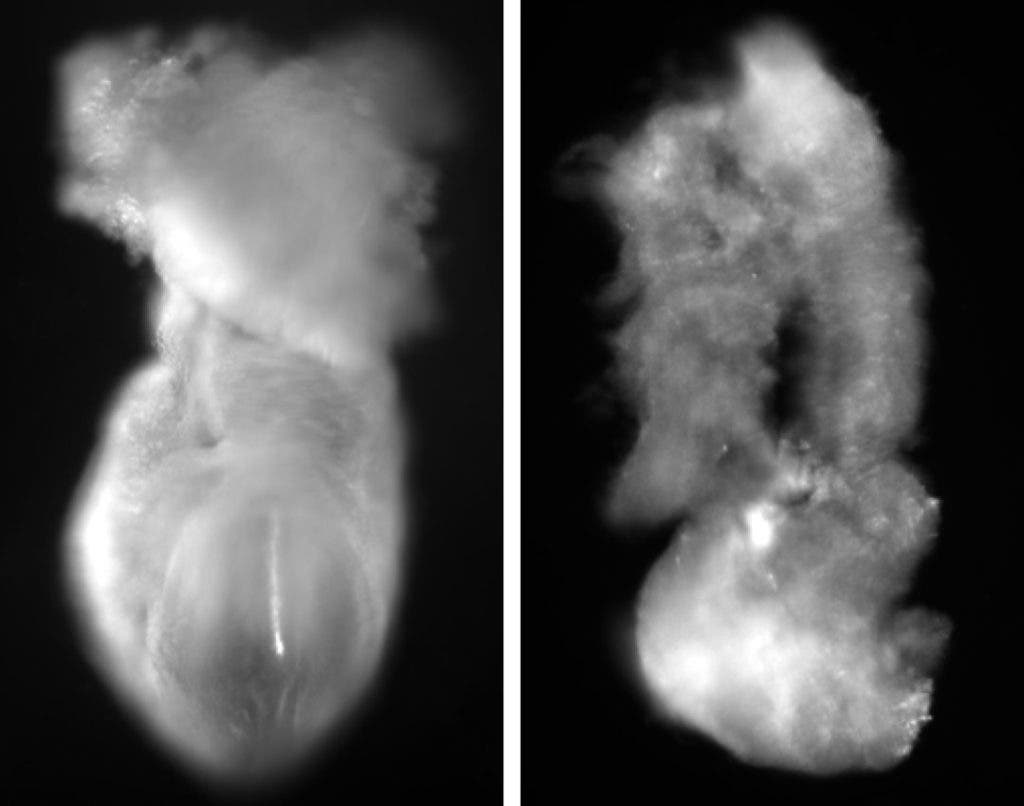For the very first time, scientists have made artificial embryos from scratch, without sperm or egg, and implanted them into female mice. The embryos developed into live fetuses, but these exhibited major malformations.

The team at the University of Texas Southwestern Medical Center used extended pluripotent stem cells, which are cells that have the potential, like an embryo, to develop into any type of tissue in the body. These ‘master cells’ are able to form all three major types of cell groups (ectoderm, endoderm, and mesoderm). Unlike simple pluripotent stem cells, the ‘extended’ variety can develop into tissues that support the embryo, such as the placenta. Without this type of stem cells, embryos cannot develop and grow properly.
The researchers coaxed stem cells to form into all the cells required for the development of an embryo by bathing them into a solution made of nutrients, growth stimulants, and signaling molecules. The cells assembled into embryo-like structures, including placental tissue.
Next, the artificial embryos were implanted into the uteruses of female mice. Only 7% of the implants were successful but those embryos that did work actually started developing early fetal structures. There were major malformations, however, as the tissue structure and organization did not closely resemble that of a normal embryo.
Previously, other research groups had managed to grow artificial embryos but this was the first time that they were successfully implanted and developed placental cells.
In the future, the University of Texas researchers plan on refining their method in order to grow fetuses that are indistinguishable from normal ones. The goal is to replace real embryos and make artificial ones at scale. These embryo models could then be grown in dishes to study early mammalian development and accelerate drug development.
Some of the cells that the researchers used to grow into embryos originally came from the ear of a mouse. Theoretically, the same should be possible for human embryos, but why would we? Besides testing drugs, artificial embryos could be grown from the skin cells of an infertile person. Then, in the lab, these embryos could be studied in order to identify potential genetic defects that might cause infertility.
Even if such stem cell-derived embryos do not completely mimic normal embryo growth, there is still a lot we can learn about mammalian development. But, as is always the case with research that breaks the frontiers of what was once thought possible, our policies haven’t yet kept up with advances. There are serious ethical considerations to possibly making a person from a synthetic embryo. Although such a prospect is still science fiction, rapid developments such as the present study suggest that it is not impossible — and we better prepare.
The findings were reported in the journal Cell.









